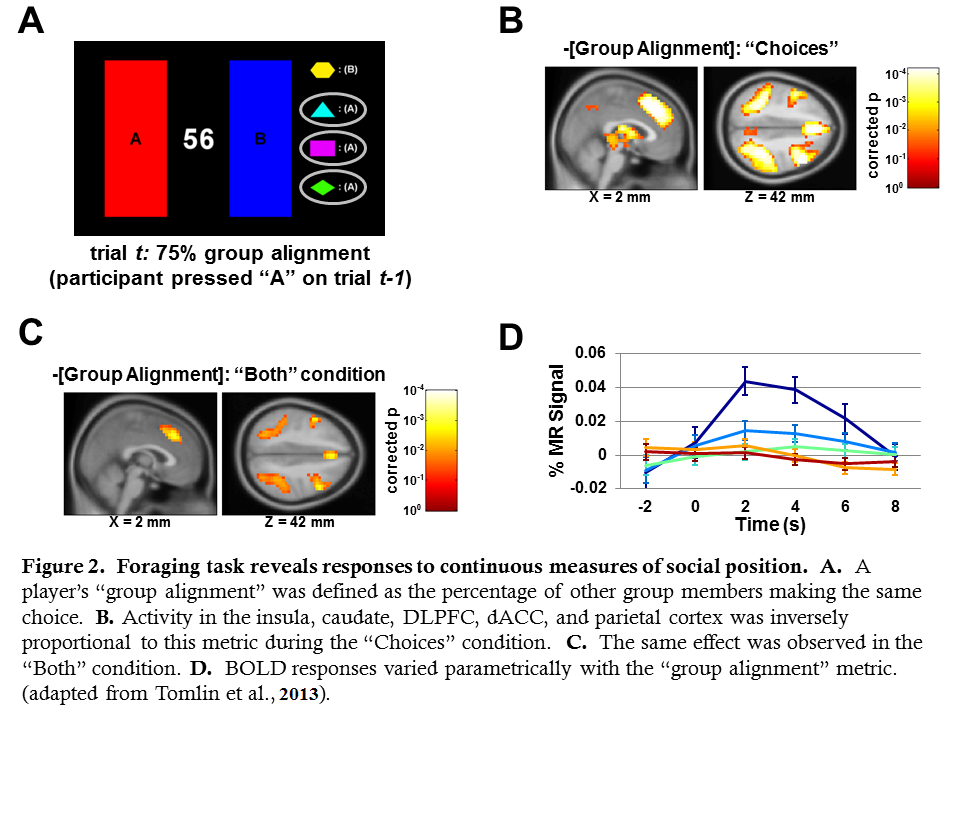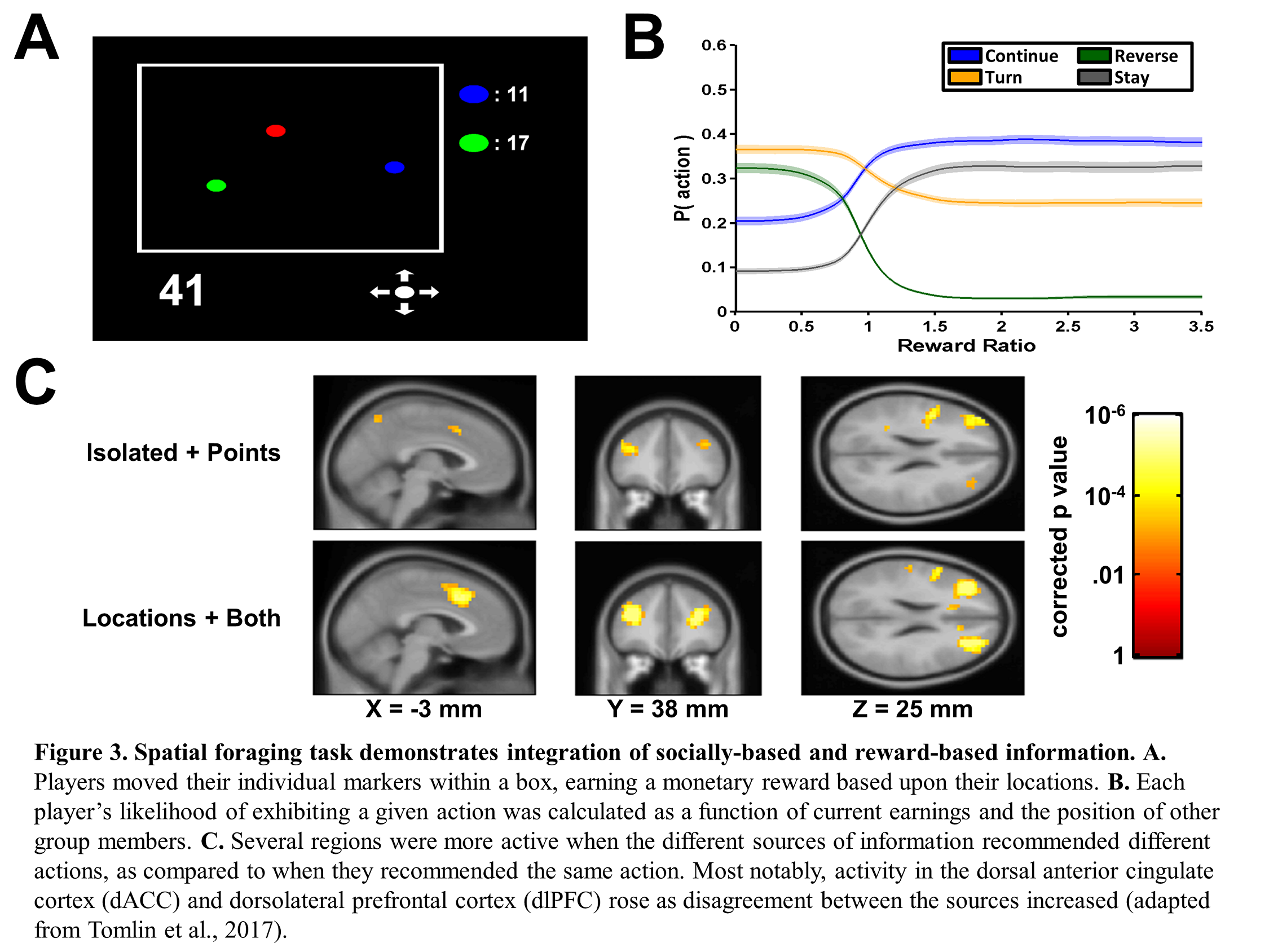Social interaction is among the most complicated skills in the human repertoire, yet the vast majority of interactions occur with a minimum of awareness regarding all of these different tasks which must be performed. Perhaps it is the automaticity of these processes, and their consequent unconscious execution, that has historically made social interactions so difficult to quantify and model.
As my primary interests have historically been at the intersection of social neuroscience and reward-based decision making, my approach has been to present participants with tasks that already exist in a simple, quantified domain, yet retain their social properties. Through the use of these tasks, my work elucidates how the brain interprets socially relevant information and adjusts decision-making behavior based upon the signals coming from social partners.
As a graduate student, I used a two-person monetary exchange task commonly known as the "Trust Task," in which two subjects assume asymmetric roles and make sequential choices, to examine the brain activity and behavior during the interaction within a quantified framework. The use of Hyperscan-fMRI (the simultaneous, synchronized acquisition of fMRI data from subjects in multiple scanners) and the analysis of the data collected via this method allowed me to investigate the neural activity of all subjects involved in the task.
One of my findings from the "Trust Task" data concerned the signals generated by the cingulate gyrus during the social exchange. This is a relatively large region of the brain which exhibited a pronounced, graded response along its length according to the simplest of social determinations: whether a stimulus was generated by the subject or his partner in the task.

As a postdoctoral associate, I began a new project that involved groups of individuals making decisions in the context of a quantified environment. Using a two-alternative forced-choice task pioneered in previous work, I devised a multi-person experiment in which subjects made a series of binary choices while being presented with varying amounts of information regarding the decisions of four other group members. This experiment was designed to examine the effect of social feedback on foraging behavior in an unknown environment, with an emphasis on uncovering the neural mechanisms behind social herding. I once again employed Hyperscan technology to collect fMRI data from all five participants simultaneously, with a total data set comprised of over 100 individuals.
Analysis of BOLD activity for each subject on a choice-by-choice basis revealed a network of regions that exhibited a graded response to the subject's alignment with the group. Additional analysis revealed that the combination of the behavioral input from the other participants and the level of activity present in the regions (and the insula in particular) were significantly correlated with instances in which the subject subsequently conformed to the majority opinion.

In a follow-up experiment, I introduced a new task in which groups of participants sought to maximize their earnings while foraging inside a two dimensional space. As they moved their individual markers within the space, they changed not only their earnings (which varied as a function of their location) but also their position relative to the rest of the group. By fitting a computational model to each participant, I quantified the influence of reward-based information and socially-based information (as well as the balance between them) on decisions during the task.
A subsequent analysis examined participants' brain activity in response to disagreement between these different influences. BOLD responses during decision-making were increased in regions such as the dorsal anterior cingulate cortex (dACC) and dorsolateral prefrontal cortex (dlPFC) when reward-based and socially-based information recommended different actions, as compared to decisions for which they recommended the same action.
My most recent experimental work examines the perceptions of "ingroups" and "outgroups" (that is, the boundaries people draw that define "us" and "them") and how these groups are treated, even when the groups themselves are designated arbitrarily.
The final component of my research is the use of computational models to study the evolution of social decision-making. One of these computational frameworks was used to study decision-making in large populations of agents, allowing me to examine the evolution (and devolution) of executive function in the context of a dual-system theory of cognition. I have also examined the evolution of fairness in the context of social exchange through the use of a task from behavioral economics, the Ultimatum Game. Finally, my most recent simulation work has examined the robustness of different mental models in the context of consensus decision-making